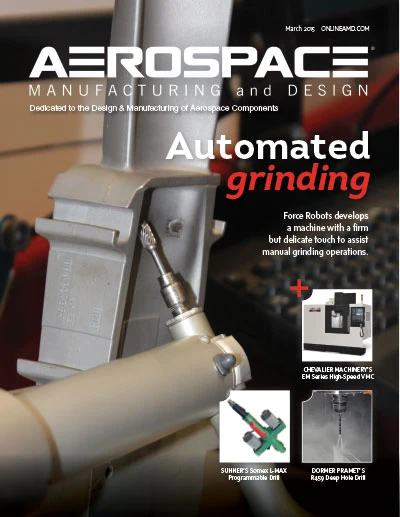 The latest carbon-fiber composite materials used in Boeing’s 787 Dreamliner and Airbus’s A350 are up to 20% lighter than conventional aluminum, leading to better fuel efficiency and longer flights. To take full advantage of these materials, aircraft manufacturers and maintenance repair organizations (MROs) still have to contain their airborne dust, foreign object debris (FOD), and particulates when grinding, sanding, and cutting.
The latest carbon-fiber composite materials used in Boeing’s 787 Dreamliner and Airbus’s A350 are up to 20% lighter than conventional aluminum, leading to better fuel efficiency and longer flights. To take full advantage of these materials, aircraft manufacturers and maintenance repair organizations (MROs) still have to contain their airborne dust, foreign object debris (FOD), and particulates when grinding, sanding, and cutting.
To optimize operations, aerospace manufacturers and MROs are increasingly adopting the best practice of clean as you go. From composites to hexavalent chromium to cadmium, vacuum capture of dangerous dust, FOD, and particulates at the source is enhancing aircraft safety, quality, and production.
GE Aviation’s Batesville, Mississippi, composites plant sought to proactively identify and reduce dust since cleanliness is vital to quality manufacturing.
“We’ve had everyone from 60 Minutes to Federal Aviation Administration (FAA) quality inspectors tour our site, and our product requires us to have clean rooms,” says Curt Curtis, technical leader of the Batesville plant’s manufacturing shop.
GE Aviation’s Batesville plant produces two composite parts for GE’s GEnx jet engine: fan platforms (installed between the engine’s front fan blades) and the fan case assembly (a large circular structure that encases the front fan). The GEnx engine powers Boeing 787 and 747-8 aircraft and is the first with composite fan blades, fan platforms, and fan case assemblies.
Compared with traditional aluminum airframe components, composite components provide engine weight savings and greater durability, resulting in better aircraft fuel efficiency as well as reduced maintenance and replacement costs. Compared with a typical aluminum fan case with titanium blades, Curtis says the composite GEnx engine fan case and fan blades save more than 300 lb per engine.
According to Curtis, the composite process has a significant amount of handwork involved to finish the product properly. After curing the material, certain areas require blending, smoothing, and removal of excess material, called flash, typically using handtools such as sanders and grinders.
“Our rule is to capture dust at the point it’s created because cleanliness is our first line of defense against any potential quality issues,” Curtis says.
According to Curtis, the Batesville plant brings smaller composite parts inside a dust containment booth to finish them. “But larger composite components like our fan cases, which are about 10ft in diameter, weren’t practical to bring inside a containment booth,” Curtis says. “That’s when using a tool shroud is critical since that essentially becomes the dust containment booth.”
After the Batesville plant conducted an aerospace industry literature study and evaluation, it chose DCM Clean-Air Products equipment. The Fort Worth, Texas-based manufacturer of power hand tools designed for source capture of airborne particulates, offers a line of HEPA vacuums, sanders, grinders, drills, routers, buffers, and shrouds for custom applications.
Curtis says, “To enhance quality and safety, we required strong, reliable vacuum suction with HEPA filters and tool shrouds to capture any composite dust at the source.”
Safer, better, faster
In aircraft MRO, sanding, grinding, sawing, or drilling can launch a plume of dust, FOD, and small particulate across the aircraft and worksite. Often this can endanger worker safety while hindering quality and production if work must be stopped to thoroughly clean the product and worksite.
“When doing a composite repair, cutting out an area, and grinding it down, you’re putting particulates and volatiles in the air,” explains Scott Malcomb, a JetBlue University instructor at Orlando International Airport, who teaches advanced composites to a select group of technicians. “While those doing the repair usually wear respirators, gloves, goggles, and sleeves, people around them typically aren’t wearing protective equipment, so they’re getting exposed.”
The Occupational Safety and Health Administration (OSHA) has not required personal protective equipment (PPE) for exposure to most composite reinforcement fibers since they do not pose a health risk in dry fabric form or when cured in a resin matrix, but machining a cured laminate can get short fibers airborne. This is a potential concern if the short fibers are inhaled and damage lung tissue.
“While airborne composite materials aren’t officially considered a respiratory hazard, safety managers would be wise to remember that asbestos was once considered safe,” Malcomb says. “Best practice technique is to vacuum-extract composite dust and debris at the source so it doesn’t get airborne, scatter as FOD, or have to be cleaned up later.”
Besides composites, other dusts and debris can be even more important to control. According to an OSHA report, hexavalent chromium [Cr(VI)], a toxic form of chromium, is often used in the form of zinc chromate as an aerospace paint primer, varnish, and pigment. It is toxic when inhaled as an airborne dust, fume, or mist, and can cause lung cancer.
The OSHA report states, “Surfaces contaminated with Cr(VI) must be cleaned by HEPA-filtered vacuuming or other methods to minimize exposure to Cr(VI).”
Cadmium dust and FOD from frozen fasteners, drilled out during maintenance, can be toxic and dangerous as well. The airborne dust of many materials such as aluminum can ignite or explode if set off by a spark, blowtorch, or other ignition source.
FOD damage is estimated to cost the aerospace industry $4 billion a year. Not only can FOD cause product rejection by aircraft OEMs and suppliers, it can also lead to catastrophic failure if it interferes with mission-critical equipment.
Applying best practices
To control dust and debris in materials such as aluminum, the aerospace industry has long used vacuum extraction. Now, vacuum capture of dangerous dust, FOD, and particulates at the source is being extended as a best practice in materials such as composites and hexavalent chromium to enhance safety, quality, and production.
“Since the product is only as strong as its weakest link, today vacuum capture increasingly follows a whole system approach, usually involving everything from the abrasive to the tools, hoses, and vacuums, ensuring that harmful dust and debris is safely handled at each step of the process,” says Brad Clayton, vice president of Clayton Associates, a Lakewood, New Jersey-based supplier of source capture tools and vacuum sanding equipment.
Associated Painters, a service provider for aircraft manufacturers, modification centers, and airlines uses a complete vacuum extraction system to control dust and particulate matter when mechanically removing old paint with sanders before repainting.
“Capturing dust and particulate at the source protects everyone across the entire worksite, improves the quality of the paint job, and helps us comply with FAA, EPA, and OSHA regulations,” says Mike Wilkins, purchasing manager for both Associated Painters and Leading Edge Aviation Services, another aerospace service provider.
Wilkins finds that preventing dust and particulates from circulating around the worksite is much more effective than traditionally hosing down the floor and using squeegees to scrape waste material into trenches to pick up later.
“Our operators are safer, more comfortable, and about 8% to 10% more productive using Clayton sanders with tool shrouds and DustMaster vacuums with custom hoses,” says Wilkins, whose operators still wear protective suits and respiratory masks as a work precaution. “Our paint jobs are better since there’s no dust or particulate getting kicked up to settle on the paint. There is no dust or particulate to clean up after we use the vacuums.”
Malcomb’s JetBlue University advanced composites class also uses a complete vacuum extraction system to control particulates when grinding and removing a damaged section of carbon fiber or fiberglass material.
“In an enclosed area like our class or a shop, controlling particulate at the source is even more important,” Malcomb says. “We run four people at a time on a repair, three on our Clayton DustMaster unit, and another on a single unit.”
According to Malcomb, the larger unit is a complete, lockable, HEPA filter vacuum system configured for aerospace maintenance, with three hoses for simultaneous use. A safe filter-change process allows workers to change filters without re-introducing dust and pollutants into the air.
Since both the larger and smaller units are portable, advanced composites class students will use them for repairs in the field as well.
“Our students will not only use the vacuum extraction units in the training room but also will roll them out to do on-wing repairs on the hangar floor,” Malcomb says.
According to Malcomb, after his select group of about 20 to 25 advanced composite class students are fully trained, they will be stationed in New York City, Boston, and Orlando to do necessary JetBlue light check composite repairs.
“Safety, environmental, and production managers need to look into source capture vacuum equipment,” Malcomb concludes. “As aircraft MROs begin to use these systems, they will move from best practice to standard procedure because of the way they help to optimize safety, quality, and production.”
Clayton Associates Inc.
www.jclayton.com
DCM Clean Air Products
www.dcmcleanair.com

Explore the March 2015 Issue
Check out more from this issue and find your next story to read.
Latest from Aerospace Manufacturing and Design
- The Partner Companies acquires Precision Eforming
- Hall Effect angle sensors
- July is for learning – so drop in for this month’s second Manufacturing Lunch + Learn
- Essential strategies to protect your data
- NASA selects instruments for Artemis lunar terrain vehicle
- Twin-cutter boring head
- Bell awarded funding for X-plane build phase of SPRINT program
- Shaft coupling clamps





